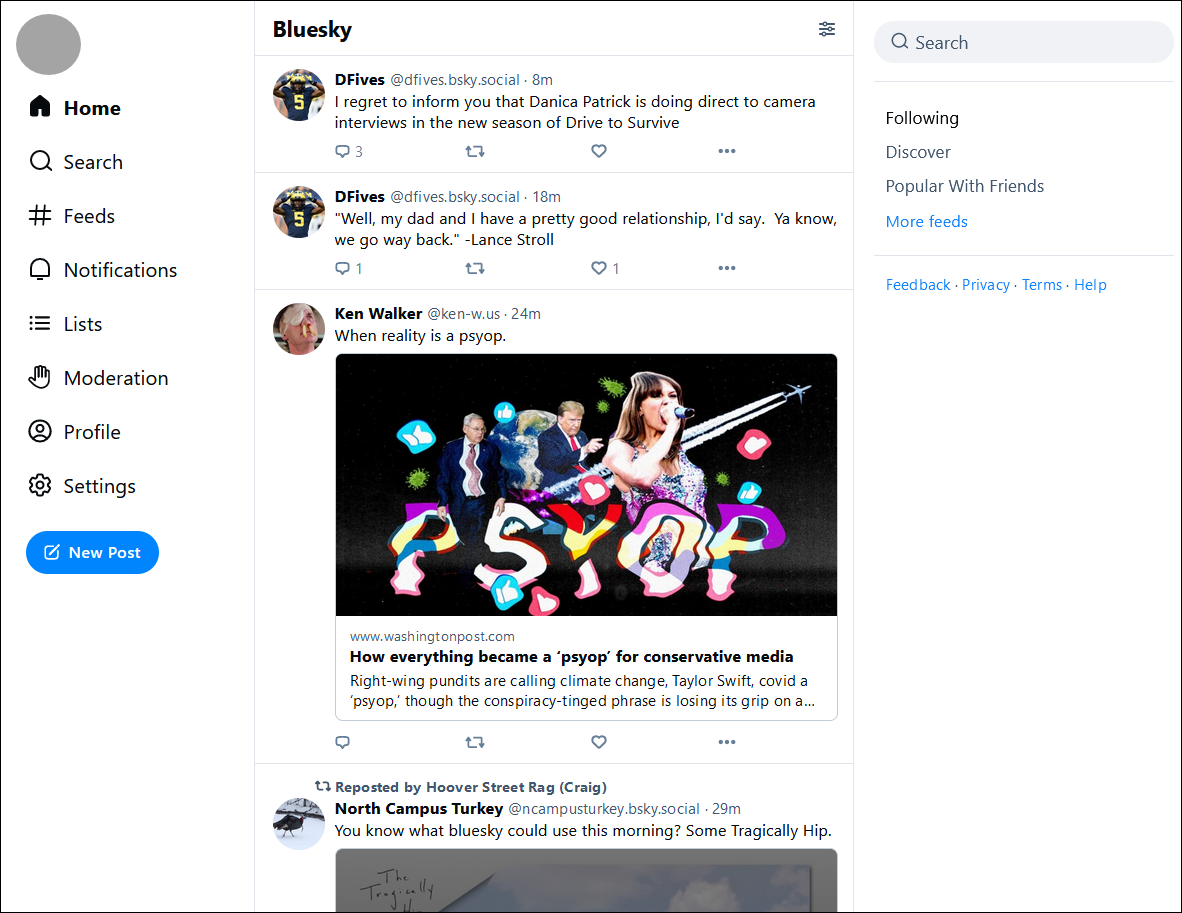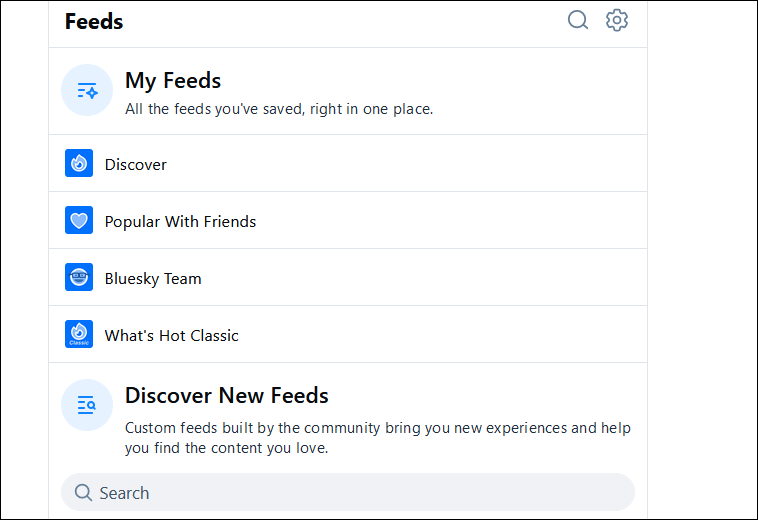Key Takeaways
- Bluesky is a decentralized social network similar to Twitter, with a 300-character limit and basic features like replies and likes.
- Bluesky’s AT Protocol allows it to be decentralized, but it doesn’t interact with Mastodon or Instagram threads.
- Bluesky is owned by a team, not Jack Dorsey, and lacks Twitter’s algorithmic feed and video posting features.
For a long time, the social media landscape was pretty static—then Elon Musk bought Twitter. In the aftermath, several alternatives popped up. Most have faded away, but one of the most popular is Bluesky, and it has a lot in common with the social network now known as “X.” Does it have anything unique to offer?
What is Bluesky Social?
Bluesky is a decentralized, open-sourcemicroblogging social network very similar to Twitter (X). You may have only heard of Bluesky in recent years, but the project was actually started in 2019 by Jack Dorsey while he was currently the CEO of Twitter.
Unsurprisingly, Bluesky is essentially a barebones version of Twitter—it even looks very similar. Users can post 300-character “skeets” that can include photos and GIFs, but not videos. Users can reply, repost, quote posts, and like posts. There are also multiple “feeds”—“Following,” “Popular With Friends,” “What’s Hot,” and a “Discover” page. Bluesky does not have direct messages at the time of writing.
Bluesky’s main Home feed is not algorithmic. It shows posts from all of your followers in chronological order. You can choose whether or not you want to see replies, reposts, and quote posts in the timeline. If you want to see replies, you can restrict them to followers and adjust how many likes a reply must have to be shown in the feed.
Moderation controls on Bluesky include content filtering controls, the ability to create and share moderation lists, mute accounts, block accounts, and an option to “discourage” apps from showing your account to people who are logged out.
Like Mastodon, Bluesky is a decentralized social network. If you sign up through Bluesky’s official website, you are added to the main bsky.social server. However, you can self-host your own server and still interact with everyone at bsky.social. While Bluesky is decentralized, it does not use the same protocol as Mastodon and Instagram threads, so you can’t interact with people on those platforms.
Back in 2019, Dorsey announced that Twitter would be funding a small group of developers to work on an “open and decentralized standard for social media.” The plan was for Twitter itself to use the standard eventually, but Musk’s purchase of the social network derailed things.
The standard that those developers eventually created is the “AT Protocol” (ATP), which is what powers Bluesky and allows it to be decentralized. Bluesky released the open-source code for ATP in May 2022. Other than Bluesky itself, there are currently no other social networks using the ATP.
Who Owns Bluesky?
While ex-Twitter co-founder and CEO Jack Dorsey started the project that would eventually become Bluesky, he is not the owner. Bluesky is a Public Benefit LLC, and the company describes its ownership as “owned by Jay Graber and the Bluesky team.” Jack Dorsey is on the board of directors along with Graber and XMPP creator Jeremie Miller.
As mentioned above, the “Bluesky Initiative” started in 2019 and was managed by then Twitter CTO Parag Agrawal. Twitter eventually brought in Jay Graber, who had founded a decentralized event planning website of her own. She was named the first CEO of Bluesky in August 2021, when it was formally incorporated as a Public Benefit LLC separate from Twitter.
Bluesky didn’t really make a splash until October 2022, when it opened a waitlist. The iPhone app launched four months later in February 2023, and the Android app followed in April 2023. Up until February 2024, Bluesky was invite-only, but it already had over three million users. Now, everyone is free to sign up.
Bluesky vs Twitter (X)
Bluesky most likely wouldn’t exist if not for Twitter, so the two are often compared. I described Bluesky as a “barebones” version of Twitter earlier, and that is an easy way to think about it. Much of Twitter’s core experience can be found on Bluesky, but it lacks a lot of the “extras.”
Bluesky has a website and mobile apps on Android and iPhone. Posts on Bluesky have a 300-character limit vs 280 on Twitter. As of February 2024, Bluesky still only allows photos and GIFs in posts, not videos. Replies, reposts, quote posts, and likes are essentially the same as Twitter.
Bluesky does not have an algorithmic “For You” timeline. The main Home feed is chronological, but there are also “Discover,”“Popular With Friends,” and “What’s Hot” feeds. Users can also create their own feeds, which others can follow and pin to their Home page.
Bluesky is not “owned” in the same way as Twitter. There is only one way to use Twitter, and that is through Twitter’s official website and apps. You must have an account on those official instances. With Bluesky, there’s a bit more openness. The AT Protocol is open source, and you could host your own server and not need Bluesky’s server at all.
Even the color scheme and UI of Bluesky are very reminiscent of Twitter. The shades of blue are slightly different, but it’s still blue and white. Essentially, if you don’t want to use Twitter but you’re looking for the most Twitter-like alternative, Bluesky is the place for you. You may miss some of the advanced features, like a super comprehensive search tool, but the overall experience is very similar.
source

